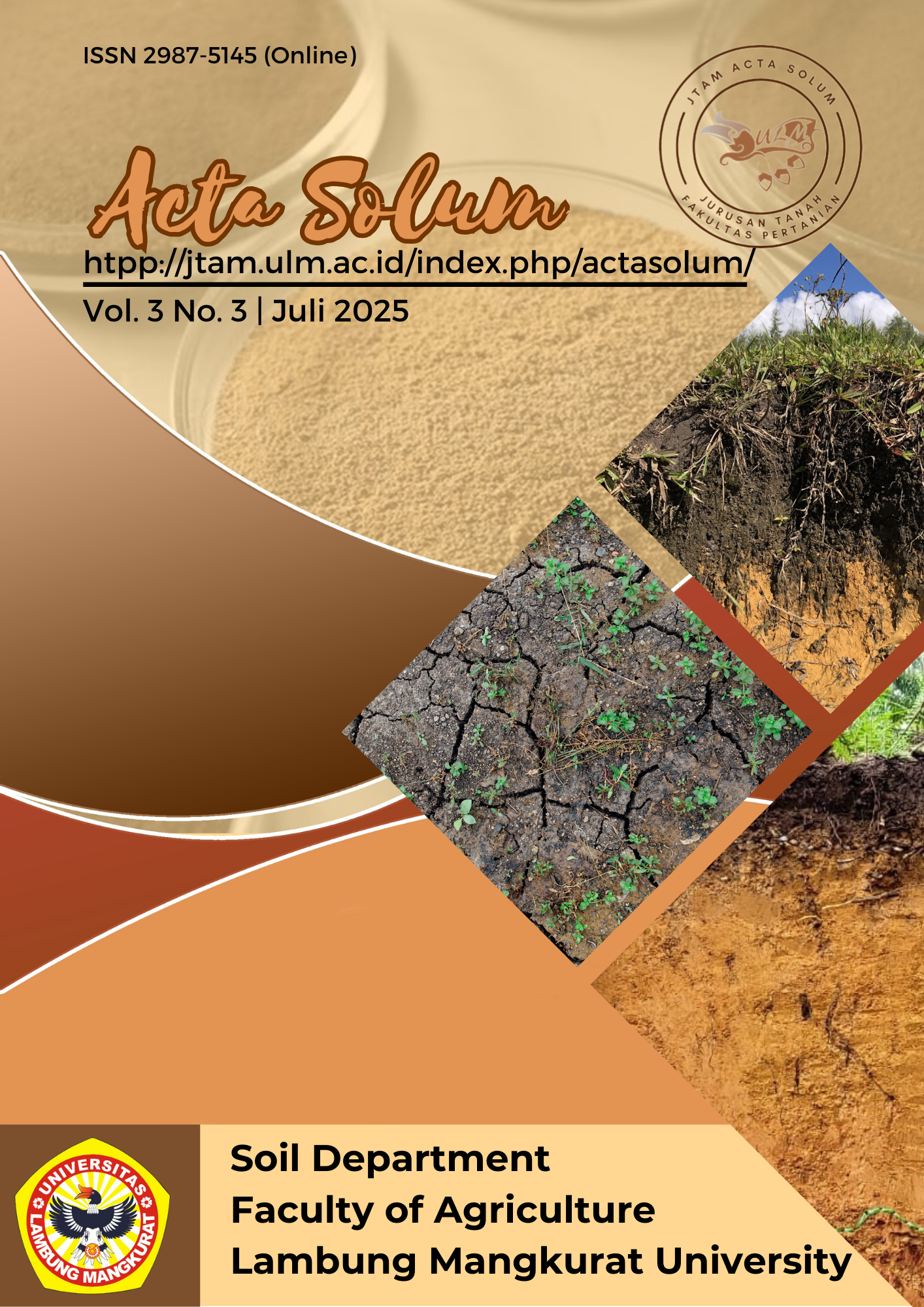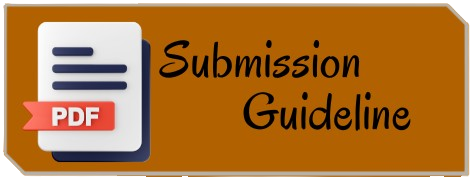Detection of Arbuscular Mycorrhizal Fungi in the Root of Allium fistulosum Grown in the Fumigated Field
Abstract
Soil fumigation is important pre-plantation practices to maximize land productivity. Not only effectively eliminate soil pests and pathogens, but this practice also affecting the beneficial soil microbial community including arbuscular mycorrhizal (AM) fungi. The AM fungal community in the roots of Allium fistulosum were studied. The roots have been collected from fumigated and non-fumigated field. The DNA has been extracted, then the fungal LSU ribosomal RNA gene has been amplified and sequenced. Two and three AM fungal OTUs have been detected from fumigated and non-fumigated field, respectively. Decomposer and pathogenic fungi were detected coexist with the AM fungi, suggesting the resilience of these fungi upon fumigation treatment.
References
Bonfante, P. 2022. Microbe Profile: Gigaspora margarita, a multifaceted arbuscular mycorrhizal fungus. Microbiology (United Kingdom) 168. https://doi.org/10.1099/mic.0.001202
Chen, R., Jiang, W., Xu, S. 2022. An emerging chemical fumigant: two-sided effects of dazomet on soil microbial environment and plant response. Environmental Science and Pollution Research 29:3022–3036. https://doi.org/10.1007/s11356-021-15401-4
Dangi, S.R., Tirado-Corbalá, R., Gerik, J., & Hanson, B. D. 2017. Effect of long-term continuous fumigation on soil microbial communities. Agronomy 7. https://doi.org/10.3390/agronomy7020037
Fang, W., Wang, X., Huang, B. 2020. Comparative analysis of the effects of five soil fumigants on the abundance of denitrifying microbes and changes in bacterial community composition. Ecotoxicol Environ Saf 187. https://doi.org/10.1016/j.ecoenv.2019.109850
Gao, S., Sosnoskie, L. M., Cabrera, J. A. 2016. Fumigation efficacy and emission reduction using low-permeability film in orchard soil fumigation. Pest Manag Sci 72:306–314. https://doi.org/10.1002/ps.3993
Hart, M. M., & Reader, R. J. 2002. Taxonomic basis for variation in the colonization strategy of arbuscular mycorrhizal fungi. New Phytologist 153:335–344. https://doi.org/10.1046/j.0028-646X.2001.00312.x
Kawahara, A., & Ezawa, T. 2013. Characterization of arbuscular mycorrhizal fungal communities with respect to zonal vegetation in a coastal dune ecosystem. Oecologia 173:533–543. https://doi.org/10.1007/s00442-013-2622-y
Kim, S. H., Yoon, J. B., Han, J. 2023. Green onion (Allium fistulosum): An aromatic vegetable crop esteemed for food, nutritional and therapeutic significance. Foods 12. https://doi.org/10.3390/foods12244503
Lazar, A., Mushinski, R. M., & Bending, G. D. 2022 Landscape scale ecology of Tetracladium spp. fungal root endophytes. Environmental Microbiomes 17. https://doi.org/10.1186/s40793-022-00431-3
Lazar, A., Phillips, R.P., Kivlin, S. 2024. Understanding the ecological versatility of Tetracladium species in temperate forest soils. Environ Microbiol 26. https://doi.org/10.1111/1462-2920.70001
Le, D., Audenaert, K., & Haesaert, G. 2021. Fusarium basal rot: profile of an increasingly important disease in Allium spp. Trop Plant Pathol 46:241–253. https://doi.org/10.1007/s40858-021-00421-9/Published
Leiva, A. M., Pardo, J. M., Arinaitwe, W. 2023. Ceratobasidium sp. is associated with cassava witches’ broom disease, a re-emerging threat to cassava cultivation in Southeast Asia. Sci Rep 13. https://doi.org/10.1038/s41598-023-49735-5
Li, X., Skillman, V., Dung, J., & Frost, K. 2022. Legacy effects of fumigation on soil bacterial and fungal communities and their response to metam sodium application. Environmental Microbiomes 17. https://doi.org/10.1186/s40793-022-00454-w
Li, Y., Zhang, X., Song, X. 2025. Identification of a novel pathogen of peanut root rot, Ceratobasidium sp. AG-A, and the potential of selected bacterial biocontrol agents. Journal of Fungi 11:472. https://doi.org/10.3390/jof11070472
Lin, Y. M., Li, M. H., Dai, C. Y. 2024. Dazomet fumigation modification of the soil microorganism community and promotion of Panax notoginseng growth. Front Microbiol 15. https://doi.org/10.3389/fmicb.2024.1443526
Mao, L., Liu, X., Sial, M. U. 2024. Soil application of dazomet combined with 1,3-dichloropropene against soilborne pests for tomato production. Sci Rep 14. https://doi.org/10.1038/s41598-024-83182-0
Misawa, T., Kurose, D., & Kuninaga, S. 2017. First report of leaf sheath rot of Welsh onion caused by nine taxa of Rhizoctonia spp. and characteristics of the pathogens. Journal of General Plant Pathology 83:121–130. https://doi.org/10.1007/s10327-017-0706-y
Padula, G., Xia, X., & Hołubowicz, R. 2022. Welsh Onion (Allium fistulosum L.) Seed Physiology, Breeding, Production and Trade. Plants 11. https://doi.org/10.3390/plants11030343
Smith, S. E., & Read, D. 2008. Mycorrhizal Symbiosis, 3rd edn. Academic Press. https://doi.org/10.2136/sssaj2008.0015br
Suzuki, T., Uno, T., Tajima, R. 2021. Optimum range of soil phosphorus fertility needed for effective arbuscular mycorrhizal inoculation of Welsh onions in a non-allophanic Andosol. Soil Sci Plant Nutr 67:540–544. https://doi.org/10.1080/00380768.2021.1977587
Tawaraya, K., Hirose, R., & Wagatsuma, T. 2012. Inoculation of arbuscular mycorrhizal fungi can substantially reduce phosphate fertilizer application to Allium fistulosum L. and achieve marketable yield under field condition. Biol Fertil Soils 48:839–843. https://doi.org/10.1007/s00374-012-0669-2
Tsuji, M., Kudoh, S., Tanabe, Y., & Hoshino, T. 2019. Basidiomycetous yeast of the genus Mrakia. In: Fungi in Extreme Environments: ecological role and biotechnological significance. Springer International Publishing, pp 145–156. https://doi.org/10.1007/978-3-030-19030-9_8
van der Heyde, M., Ohsowski, B., Abbott, L. K., & Hart, M. 2017. Arbuscular mycorrhizal fungus responses to disturbance are context-dependent. Mycorrhiza 27:431–440. https://doi.org/10.1007/s00572-016-0759-3
Wang, C. H., Tsai, Y. C., Tsai, I. 2021. Stemphylium leaf blight of Welsh Onion (Allium fistulosum): An emerging disease in Sanxing, Taiwan. Plant Dis 105. https://doi.org/10.1094/PDIS-11-20-2329-RE
Yan, D., Cao, A., Wang, Q. 2019. Dimethyl disulfide (DMDS) as an effective soil fumigant against nematodes in China. PLoS One 14. https://doi.org/10.1371/journal.pone.0224456
Yan, D., Liu, J., Wang, X. 2025. A review on the mechanisms of fumigant action. New Plant Protection 2. https://doi.org/10.1002/npp2.27
Yan, D., Wang, Q., Li, Y. 2022. Efficacy and economics evaluation of seed rhizome treatment combined with preplant soil fumigation on ginger soilborne disease, plant growth, and yield promotion. J Sci Food Agric 102:1894–1902. https://doi.org/10.1002/jsfa.11526
Yin, Y. S., Li, J. J., Zhang, F. B. 2020. First report of Ceratobasidium sp. causing root rot of garlic in China. Plant Dis. https://doi.org/https://doi.org/10.1094/PDIS-08-19-1679-PDN
Copyright (c) 2025 Anjar Cahyaningtyas

This work is licensed under a Creative Commons Attribution-ShareAlike 4.0 International License.














